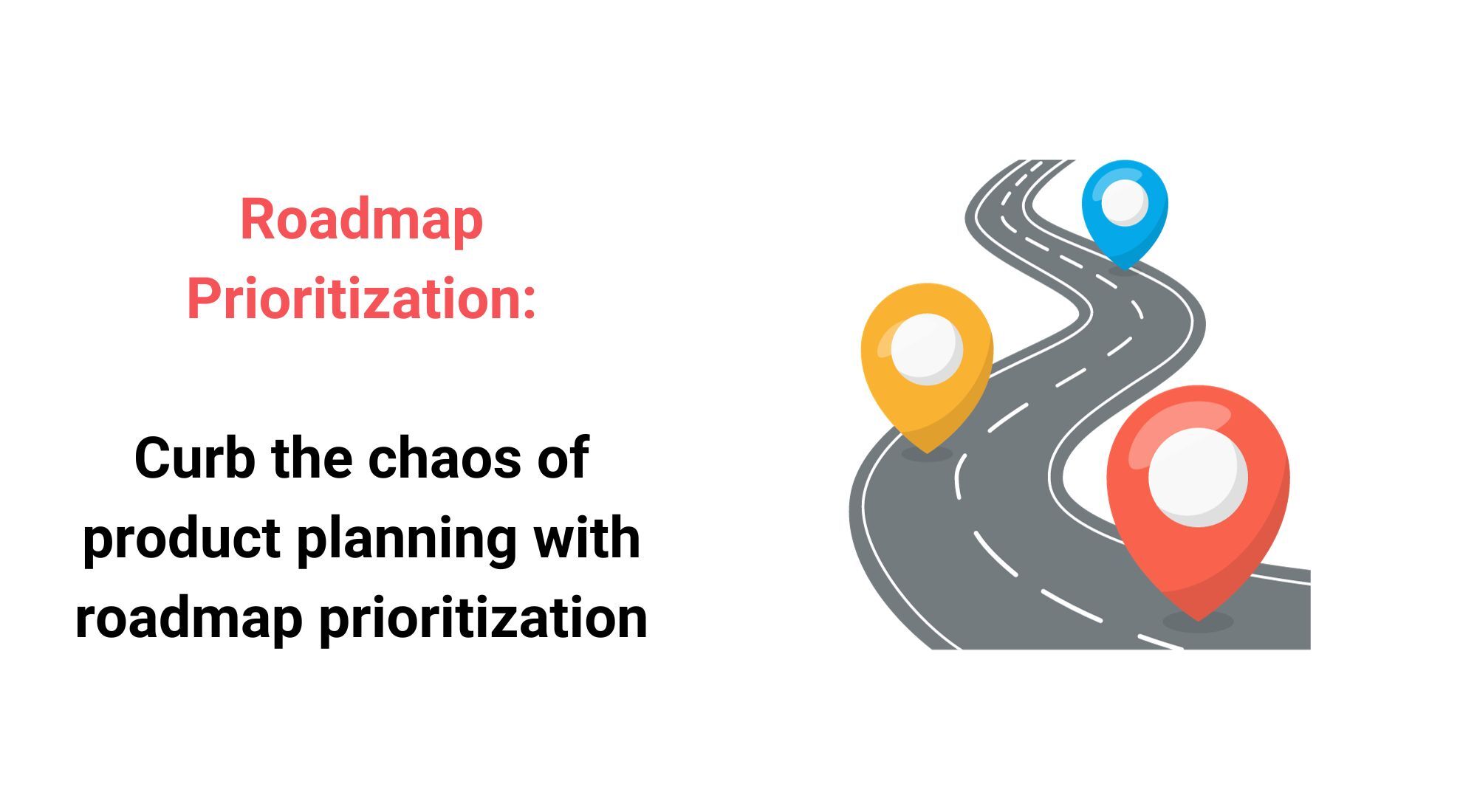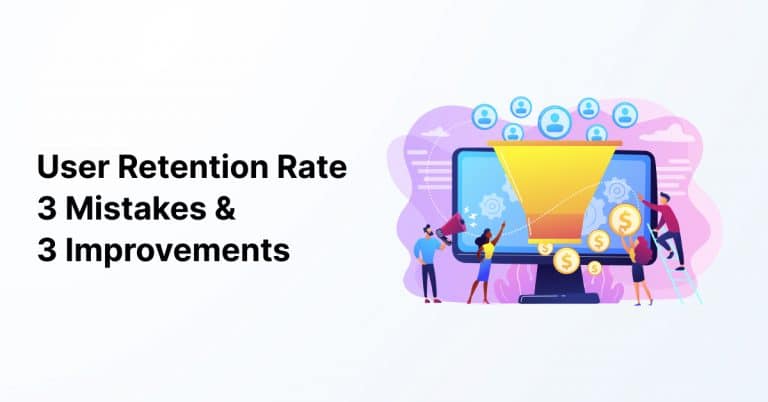Your business has a great idea for a new product. It’s innovative and highly involved, and it will take a lot of work to complete.
Sounds overwhelming, doesn’t it?
The reality is that without prioritizing the features of your product, it’ll likely never come to fruition without running into many hiccups along the way, or before completely throwing in the towel.
How do you ensure that your team is working on the most important features of your product first? Enter roadmap prioritization.
Learn how to effectively build, prioritize, and share a product roadmap that’s beneficial for product managers, team developers, stakeholders, and customers.
Table of Contents
- What Is Roadmap Prioritization?
- Factors To Keep in Mind While Working on Roadmap Prioritization
- How To Prioritize a Product Roadmap in 3 Steps
- Sharing Your Prioritized Roadmap
- Build, Prioritize, and Share Your Product Roadmap With AnnounceKit
What Is Roadmap Prioritization?
It’s all in the name.
Roadmap prioritization is a way to optimize ideas and tasks around what, when, and why your company is making a decision and effectively plotting the execution of that decision and the initiatives and steps that will help get you there.

The process might sound simple, but it involves many individuals — namely, product managers — with goals, data, strategies and more to effectively create.
Why Is Roadmap Prioritization Important?
Having an idea for a new product or feature is great. But without proper execution, releasing that new idea will likely fall flat.
The size of the task is too large to tackle without a plan, and the many trains of thought on how to move forward can quickly become overwhelming.
Implementing a prioritized product roadmap could be key to your success, because:
- They help align business strategies with the execution of ideas by being clear about what needs to be done and in what order so everyone involved can focus on the most important task at the moment to help move forward.
- They help with planning purposes so resources — time, money, and people — can be gathered and used effectively.
- They provide transparency for all stakeholders involved which helps build trust, manages expectations, and allows for open communications.
- They help with decision-making based on quantitative and qualitative data.
- They can be modified as you go to help stay responsive to shifts, trends, and new technologies.
- They help with establishing clear goals and objectives and tracking progress toward reaching them.
As decisions are made, a product roadmap is there for constant check-ins to ensure you’re still on track with your plan or if changes should be made.
Who Should Be Involved in Product Roadmap Prioritization?
While product managers are one of the most important people involved in product roadmap prioritization — they have the final say in how to execute the strategy — they aren’t alone in the process.
Product roadmap prioritization involves a shared vision among a team of stakeholders, researchers, designers, development team members, and to an extent — customers.
Each person or team involved is mostly focused on their niche, however, product managers cover everything involved from business justification to marketing to research, design, and more.
Are you looking for a way to get your customers involved with your product roadmap? AnnounceKit allows companies to effectively engage with customers with our announcement board software. Customers can provide feedback and make requests, and businesses can use customer analytics to help accurately guide product roadmaps.

Quick Setup, Easy to Use, and Many Integrations
Manage your product announcements from a single place and easily distribute them
across multiple channels.
Factors To Keep in Mind While Working on Roadmap Prioritization
Creating and prioritizing a product roadmap is one thing, but grabbing this bull by the horns without keeping some necessary ideas in mind might sabotage the roadmap-building process.

As part of a product development team, consider keeping these factors in mind to create an effective product roadmap.
Feasibility
As your team goes through and creates tasks or goals for your roadmap, consider how feasible they will be to achieve.
Think big. Technically, will this be hard to achieve? Do we have the right resources or know where to acquire them? Do we have enough?
Consider things like finances, team size, and the time commitment needed to meet the desired task.
Technical Aspects
As a product manager, you don’t want to acquire any technical debt. To avoid this, you must consider how realistic it is to achieve the technical aspects of your goals.
- Can this be done in a reasonable amount of time?
- Do we have the resources available?
- Will this negatively affect our current technology?
If technical limitations do exist, is there any scalability for the goal or the overall feature? If so, is it worthwhile to pursue?
Resources
With unlimited resources available, you can likely do anything you dream up. Unfortunately, having unlimited resources is rarely the case.
As a product manager, it’s important to consider any limitations to resources you might have that could force you to scale product development or take away from key features.
- What is your budget and what are your financial resources? Will they impact your ability to develop the essential features?
- What are your deadlines? Will you be forced into prioritizing certain items or features over others?
- Is your team built up enough and skilled enough to take on the complexity of your goals?
- Are there any legal requirements that could restrict your features?
- Are you limited by any third-party dependencies?
Value and Impact on the Business
Obviously, you want to focus on the features that will have the greatest impact on your company. While creating your product roadmap, prioritize the features that will maximize business impact (have a high return on investment) by using minimal effort and resources.
Consider these metrics:
- Retention rate
- Churn rate
- Conversion rate
- User adoption rate
- Time spent using the feature
- Revenue generated
- Net Promoter Score
Risk Management
If executed correctly, a new feature will bring opportunity, but it will also likely bring risks. Assessing potential risks beforehand can help teams ensure there are plans or systems in the event each risk occurs.
Maybe users don’t like the new feature.
Maybe your team’s resources are depleted before the feature is complete.
Maybe the feature has become too complicated along the way.
Maybe your company or brand’s reputation will be at risk if the feature is too controversial.
Input From Outside Stakeholders
Remember, product managers aren’t the only ones involved in product development — many teams, investors, and customers are a part of the equation, too.
As stakeholders begin to offer opinions, be prepared to listen to them and respond accordingly. Take the feedback, weigh its importance, and use it to edit your product roadmap.
Don’t just brush it off. Taking stakeholder input seriously can help bring greater value to everyone involved in the process.
AnnounceKit prioritizes feedback by using feature voting to get quick and transparent input from users. Try AnnounceKit to help with product roadmap prioritization today.

Quick Setup, Easy to Use, and Many Integrations
Manage your product announcements from a single place and easily distribute them
across multiple channels.
How To Prioritize a Product Roadmap in 3 Steps
Step #1: Data Collection
Creating a roadmap isn’t the time to fly by the seat of your pants. Instead of creating a product roadmap based on what you think is a good idea, product roadmaps must be developed around actionable and concrete data from many sources.
These five sources of data are a great starting point for data collection:
- Product analysis – Finding the points in your workflow where users are getting stuck and quitting rather than taking the action you’d prefer for them to take.
- Mouse tracking analysis – Record what people are doing online to gather insight into where users are paying attention to your product.
- On-page surveys – Embed surveys into your pages to ask questions that you want answers to.
- Support transcripts – Review customer support transcripts to see what customers are asking for when they reach out.
- User testing – Observe how users interact with your product or what they say about it.
Product feedback from customers and potential customers is crucial for data collection and there are many ways to go about it. Utilize emails, social media, surveys, or support tickets to ask the questions you want answered.
Whether it’s about product bugs, feature requests, or any other issue, your customers can easily and openly share them here. AnnounceKit makes this easy to do. Our feature request software allows for customer interaction so you can better move forward with your product roadmap.
Use this data to create a master list of issues. You can turn these into potential product features, fixes, and action items.
Step #2: Identify and Organize Prioritization ‘Buckets’
When product teams are analyzing data and feedback from customers, they should look at things like feature requests, bug fix requests, and innovations. Organizing these “buckets” of information makes them easier to tackle.
Create a team to head up each “bucket” to optimize workflow and dig into the information at hand.
Feature Requests
This bucket consists of requests, recommendations, and other “additions” recommended from your data collection.
- Using a spreadsheet, group similar feature requests/recommendations together and note who asked for them.
- Consider the following for each request and assign it a score:
- Is it a paying customer? Yes = 2, No = 1
- How important is the feature for them on a scale of 1 to 3?
- How many people or companies asked for this feature?
- How much do you agree with the request on a scale of 1 to 3?
- Add your scores to get a total for each feature and organize them into a conclusive list.
Bug Fixes
These inconvenient issues are just that — an inconvenience. However, they won’t cause your entire product to fail. Address these similarly to feature requests.
- Using a spreadsheet, put all similar bugs into a list and note who reported it.
- Consider the following for each bug fix and assign it a score:
- Is it a paying customer? Yes = 2, No = 1
- How important is the fix to them on a scale of 1 to 3?
- How many people or companies reported this bug?
- How important do you think this bug fix is on a scale of 1 to 3?
- Add your scores to get a total for each bug fix and organize them into a conclusive list.
New Innovations
Yes, receiving feedback and data from outside sources is important. But don’t be quick to write off the innovative ideas coming from people inside the company. After all, they are the professionals, right?
Take the time to hear these ideas and give people space to offer them.
Step #3: Objectively Identify Your Most Valuable Initiatives
After you’ve separated the new features and fixes into their buckets and allocated each of them their scores, use this information to help validate what should be prioritized to work on next.
Roadmap Prioritization Framework Approaches To Explore
There are so many different methods of prioritization that teams can use. These three frameworks are popular options depending on your company’s size and maturity, and the culture of the product development organization.
To help determine which roadmap prioritization framework might be best to use, try answering these questions:
- Are you working on the highest business value item?
- Are you delivering the necessary value to customers?
- Does your work contribute to broader business objectives?
- Can you get this product to the market?
MoSCoW
This decision-making tool is a method that helps prioritize ideas based on their importance and feasibility. MoSCoW — “must-have,” “should-have,” “could-have,” and “won’t-have” — divides the ideas into these four categories.
- List all potential features.
- Evaluate and score according to three criteria – how much users want the feature, how difficult it will be to implement, and how much it will improve the product.
- Plot the features on a graph according to the criteria
- Prioritize based on where they fall on the graph.
Kano
This framework prioritizes ideas based on their potential impact on customer satisfaction by dividing ideas into three categories:
- Must-have
- One-dimensional
- Delight features
This strategic, customer-oriented approach to product development focuses on satisfaction and functionality. Kano analysis aims to answer:
- How can we measure customer satisfaction?
- What features increase customer satisfaction?
- Do we have current features that cause high customer satisfaction?
- How can we enhance our features to get customer satisfaction to an optimal level?
Consider using the Kano analysis framework if:
- You’re working on a tight deadline
- There are limited resources available
- You’re interested in what would impress your customers
- When you want to enhance a current product
RICE
The RICE method of prioritization uses these four factors — Reach, Impact, Confidence, Effort — to evaluate and score features.
Reach – The estimation of people or users who will be affected by the feature in a given period. A score is assigned with the estimated number.
Impact – The estimate of how much the project will contribute to a user’s satisfaction, retention, or revenue. Score is often assigned as minimal (0.25), low (0.5), medium (1), high (2), or massive (3).
Confidence – The measure of how certain you are about your estimates for Reach, Impact, and Effort. Typically, the score is expressed as a percentage (100% for high, 80% for medium, and 50% for low).
Effort – The estimation of the total amount of work required to complete the project, typically measured in person-months or person–hours. A lower effort implies it can be completed quickly with fewer resources.
To calculate your RICE score, use this formula:
RICE = (Reach * Impact * Confidence) / Effort
Sharing Your Prioritized Roadmap
Your prioritized roadmap is complete. Now what? You need to get people on board. Easier said than done, though, right?
You need buy-ins at every level.
- Your product development team needs to see that you’ve used a structured and thorough process to evaluate opportunities. Show them that you’ve used qualitative and quantitative data and didn’t make decisions based on opinion.
- Stakeholders want to know how you created your product roadmap to ensure they have no concerns moving forward, so walk them through the process. Use data to show them how features will impact the bottom line, what ROI will look like, and more. Proactively address their concerns to stay in good graces.
- Share a public roadmap with customers to highlight your priorities and create an avenue for open communication. Here customers can share excitement and help increase product adoption and activation, generating more trust among your user base.
Build, Prioritize, and Share Your Product Roadmap With AnnounceKit
Creating a product roadmap might be an overwhelming challenge in and of itself, but finding a way to effectively share it with your customers could be equally as difficult.
AnnounceKit offers a product roadmap feature to take advantage of customer feedback while simultaneously keeping customers in the loop along the way.
With AnnounceKit, businesses can:
- Announce products
- Receive feature requests
- Keep customers updated on changes
- Collect customer feedback
- Collect customer analytics
- Share a completed product roadmap
- And more
Take advantage of AnnounceKit as a simple solution for getting customers involved and sharing a product roadmap along the way.

Quick Setup, Easy to Use, and Many Integrations
Manage your product announcements from a single place and easily distribute them
across multiple channels.





![Great email to introduce product updates [+Real examples]](https://announcekit.app/blog/wp-content/uploads/2021/05/great-email-768x461.jpeg)

